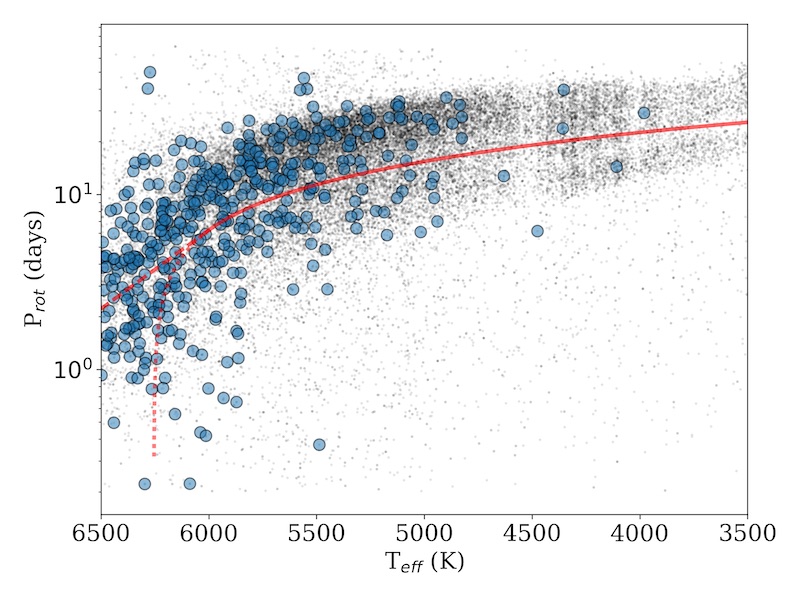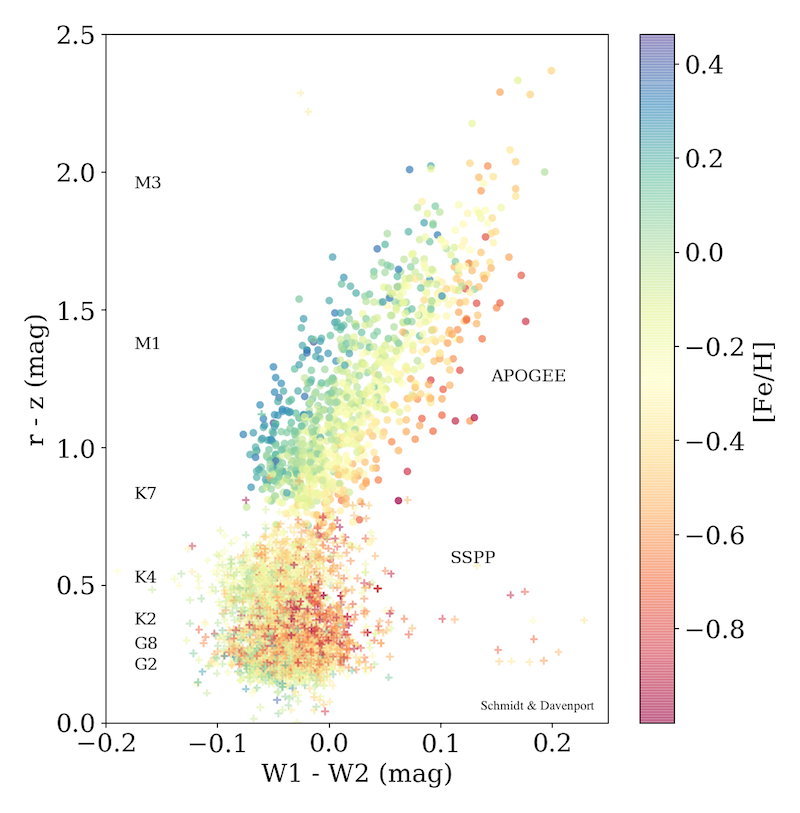05 Jul 2018
A New Endeavor
I am currently planning to start a weekly “group meeting” at UW Astronomy. I have lots of thoughts about what this can and should be, both for myself and students…
what it decidedly is not is a group focused on a single science topic. There will be general science themes to be sure (to wit: I’m not much help for people doing cosmology), but the goal is to provide a time, place, and environment where people will be collaborative, and a group that will drive productivity to further the success of the members. A good research group is one where the rising tide of ideas and collaboration lifts all boats.
I have so much more to say about this topic, but this post is focused on one aspect: the role of mentorship.
I’ve been doing two important things to prepare for this group meeting:
1) reflecting on my own journey recently, examining when I felt happiest, when I felt most productive.
2) having coffee with as many people to talk about their work, academic journeys, what has worked or failed for them, etc.
One dominating theme has come forward from both of these avenues of inquiry: mentorship can make or break a PhD experience.
Mind you, mentoring is not the only silver bullet, because that would be the ultimate gatekeeping for success. Nor am I claiming this is any sort of new idea.
The value of good mentorship has long been known, and the impact a mentor (or advocate) can have on a career - both for good or ill - is nearly limitless.
Here is my epiphany, which I believe to be absolutely true: my success in academia will be tied most directly to how good of a mentor and collaborator I am to the people around me.
Mentorship is Active
Some selected takeaways from people I’ve had coffee with - literally all of whom I think are brilliant and inspiring:
- they’ve wandered in the woods with a project for years, unsure what the end goal is
- they are unproductive
- projects take too long
- their group is not including them in the exciting work
- they lack direction, both broadly or specifically
- they feel trapped or abandoned
- they feel pressured to work on a certain topic, or avoid certain ones
- unsure where their career is heading, or pressure to take a certain path
- don’t see their mentor regularly
and the list goes on… These can all be framed as mentoring problems.
Many of these may also be symptoms of other issues that need attention. Mental health is a serious concern - take care of yourself!!! - and graduate school has a nasty habit of chipping away at our health in so many ways.
My hope is that this group meeting will allow me to provide some structured mentorship and fellowship for many students. Being a (good) mentor is a major commitment of time, energy, ideas, and heart. It requires actively stepping in and helping, intervening, guiding, listening… if a student is failing and hasn’t come to you, ultimately this is your fault. My preference is a two-pronged approach to giving mentoring: a group meeting that can help you get in the habit of presenting and synthesizing your work, and regular one-on-one sessions for pair-coding or deep-dives. My inspiration is my thesis advisor, who (at her mentoring peak) was able to keep the detailed progress of a dozen student’s projects in her mind, and was ready to advise or advertise them at a moments notice.
Creative Environments Require Active Leadership
Creating the magic, perfect environment where brilliant ideas can flourish, and where researchers can do their best work… is not trivial. Much has been said and written about the importance of uninterrupted solitary time, interactive sharing time, physical environments that breed creativity, social/group dynamics. Sometimes a lack of leadership or formal structure is credited great achievements in collaboration or creativity - but I think that misses entirely the real value of a leader or mentor who can stoke the fires of creativity and give you the time and space to fail as needed. Highly productive, equitable, inclusive research groups don’t just magically happen. They are cultivated. I have witnessed first hand what can happen when the mentor stops paying close attention for a year, and so many of the stories I’ve heard during my “coffee chats” can be summed up as a lack of active oversight and direction at key times.
I’m currently reading a book about making creativity a habit, and it mirrors much about what I read last year on writing productivity: get up and be creative for a fixed amount of time every day. When inspiration, excitement, and momentum fail you, habit (and habit-building structures) will save you. Another subtle angle to this is that habit - the magical power of just showing up - is key for not only generating deeply creative work (i.e. being receptive to divine inspiration, if such a thing exists) but also in the ability to be prolific (i.e. how to write a LOT). A good group meeting is one that encourages habit, that helps remove obstacles and adds energy to our work.
21 May 2018
Intro
These slides given (remotely) to the VASCO workshop in early 2018
The Point (TM): ZTF (or LSST) isn’t necessarily the ideal place to do SETI work, but we get it for “free”. Might as well be looking!
It could be a critical piece of the ZTF/LSST - Astrobiology connection.
ZTF is Online
data streams are rolling now, we should put in alert trigger thingys.
lightcurves will come. do batch analysis later
Search Methods
Here are some actual approaches I have come up with that we might pursue, roughly in order of ease of implementation. This list should be viewed as perpetually in-prep.
1) alerts from the stars within the “restricted Earth Transit Zone (Heller & Pudritz 2016)
- anytime we can see them w/ ZTF
- especially at our opposition (i.e. when we appear to transit)
2) alerts from known exoplanet host systems
- use an existing archive of exoplanets, like this or this
3) alerts coinciding with any known transit conjunction (mid-transit)
- allow some tolerance window to account for TTVs
4) VASCO-type events, stars appearing or disappearing.
- Esp. stars appearing that do not have a Gaia DR2 detection, for example.
- stars disappearing will be very interesting
5) event (alert?) coordination/synchronization (e.g. see Makovetskii 1977, Shostak 2004)
20 Sep 2017
Intro
this post is in-prep
Kepler measured lots of rotation periods. Differential rotation was… harder. Or maybe impossible in many cases.
In walks Gaia
wrote short paper last year on rotation Kepler, using Gaia to filter our subgiants, find period bimodality extends from M dwarfs all the way to G dwarfs.

time to extend this to K2, search stars of more ages/masses. have NASA-ADAP grant to study this with Ruth, need students!
Fun Avenues
this project isn’t just about the nuts & bolts of measuring rotation, though that is a neat project in of itself.
- calibrate gyrochronology
- define 3d structure/extent of the period bimodality
- star formation history, how localized/coherent it can be. Compare to SFH in M31 from HST!
- look for influence of spiral arm passage?
- look for substructure in the 5-D space of (X,Y,Z, Color, Period)
- rotation versus OTHER THINGS, like metallicity, planet(s), age…
- rotation off the main sequence (e.g. Subgiant evolution, binaries, blue stragglers?)
03 Apr 2017
Here is a cool figure that I made with S. J. Schmidt a few years ago at a research retreat in beautiful Friday Harbor, based on work she was doing with APOGEE + WISE data for low-mass stars (see very relevant paper here)

We added to her APOGEE work by including dwarf stars processed by the SDSS Stellar Parameter Pipeline (SSPP).
What comes out of this figure is a potentially useful result: you can measure the metallicity of a star (roughly) using it’s WISE (W1-W2) color!
For M dwarfs, the [Fe/H] values can be determined by subtracting the measured (W1-W2) color from the stellar locus value for a given (r-z) color. This is a fairly small amplitude signal, however, with the offset in (W1-W2) having a max of +/-0.1 mag. The effect is less pronounced for earlier type stars (GK) measured by SDSS, but is still in the same direction about the locus.
Next Steps
- What is the cause of this signal?
- molecular features that show up for cool stars and are metallicity dependent I guess
- If we update the sample w/ latest public data from SDSS (BOSS) and APOGEE, is the signal still there?
- Can we find more cool dwarfs in APOGEE? (>M4)
- (W1-W2) appears to broaden through M dwarfs. Does it continue?
- Is the signal at all measurable for earlier type (GK) stars?
- Fit a 3D polynomial to parameterize
- Redo as function of (J-W1) instead of (r-z)
- then doesn’t depend on SDSS photometry, can be done for all WISE stars!
- [Fe/H] map of nearby Milky Way?
- use Gaia to pick only dwarfs
What I need: People who know more about the current state of the field for “chemical cartography” of our Milky Way. Is it still exciting to measure [Fe/H] gradients? Look for kinematic+chemical substructure?
09 Mar 2017
One of the more amusing SETI articles in recent memory is one suggesting lasers could be used to “cloak” a planet’s transit, by essentially filling in the missing starlight occulted by the planet. This raises an interesting observable question: Do we ever see transits go missing?
There have been examples of eclipses (i.e. two stars) changing depths over the course of the Kepler mission. These are neat, and usually attributed to the viewing angle of the system changing.
Transit Timing Variations (TTVs) are all the rage, as the slow drift/change of transit occurrence times points to additional planets/bodies in the system. What you observe is a periodic transit event slowly falling ahead/behind schedule as the 3rd body moves around it.
However this idea is much simpler, and driven by the SETI question: Do any transits fail to show up when we’d expect them to?
##Game plan:
- Get list of all available transiting planets in Kepler without transit timing variations (TTVs)
- Obtain long cadence (30-min) light curves for each system
- Using published periods & times for transits, step through light curve and verify transit is present if data is available (i.e. missing data doesn’t count)
On some level this is a “reality check” exercise. I would basically not expect to find any published planets to have missing transits, as I think this would cause undue scatter in the phase-folded data that would have led to their rejection. However given the entertaining SETI angle, it does seem worth it to at least check!

